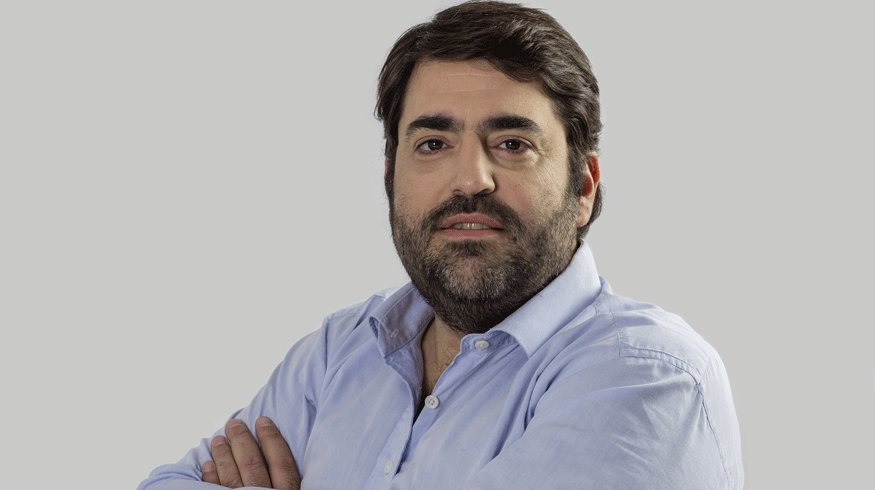Argentina official encouraging foreign mining investment

Mariano Lamothe, Undersecretary of Mining Development and Secretary of Mining Policy of Argentina.

There is no getting around the fact that Argentina faces a number of economic challenges; however, under President Mauricio Macri, in office since 2015, a number of policies have been put in place to attract foreign investment in the mining sector. This has resulted in Argentina’s mining sector contributing more to the country`s financial well-being and its GDP.
Mining exploration and development in the country on a large scale is fairly recent which means that the country remains under-explored and offers a lot of first-mover potential and, consequently, Argentina is poised to receive increasing contributions to its GDP from the mining industry.
While he was in Vancouver, British Columbia, attending the recent resource investment and exploration conferences, Resource World was able to sit down for an interview with Mariano Lamothe, Undersecretary of Mining Development of the Mining Policy Secretariat of Argentina.
RESOURCE WORLD: Would you say that the Argentina mining industry is healthy and growing?
MARIANO LAMOTHE: Yes, we can see that through the growth of the exploration budgets in the last three years which is up 92%. For example, in 2015, there were 57 mining projects in Argentina. Last year there were 76 projects.
We were the first destination for lithium exploration budgets in the world in 2018. Also, during last year, three mines started production, another three mines were under construction and two of which are expansion projects. Of course, our mining sector is smaller than Chile or Canada but we are on the path to becoming a bigger country as a destination for investment in mining.
We need more investment to develop our potential. In 2018, exploration spending in Argentina was about US $250 million. However, our goal is to reach US $400 million per year, as a minimum, for the development of our full potential for different kinds of mine development.
RW: Before acquiring a mineral property anywhere, explorers like to feel that the government is on their side. Is the Argentina government doing anything to attract mineral explorers?
ML: In Argentina, natural resources belong to the provinces. The federal government has enacted laws that promote investment in mining that establish certain benefits specifically for mining operations and for explorers as well.
In the case of explorers, there are several benefits. First of all, a set of income taxes for capital goods and raw materials. There is a VAT [Value Added Tax] reimbursement and also a double discount for exploration expenditures over income taxes. There is a 3% provincial royalty.
With the provinces, we are working for more transparency to assist explorers and are developing a digital data base called a Cadaster which lists mining properties, who owns them and their stage of development.
RW: Are mineral explorers finding the permitting process reasonable and acceptable?
ML: Different provinces have different permitting timelines. Sometimes it’s not so easy but all the provinces are working hard to improve this situation. We have an auditing system to track how much time it is taking with each file or procedure.
In addition, we recognize the importance of working from the beginning with local communities. The government and the mining community both need to work with local communities because even if all the permits are in hand, there can be local opposition. Since there was not much of a mining industry before 1993, mining is a new idea for many communities which is why it is important to gain the confidence and support of those communities where exploration and mining could take place.
RW: About one-third of the South American Lithium Triangle is in Argentina. What is the potential of finding economic lithium deposits and building mines in Argentina’s salars? (salt lakes – brines)
ML: Not only is there good geological potential, we also have friendly regulations to assist in investing in the region where the salars are located; namely, the Puna region in northwest Argentina. In this region, we are improving the infrastructure – including natural gas pipelines – that will help mine developers. Argentina’s natural gas production is expected to double in the next five years.
Some lithium companies are developing different extraction technologies. These technologies that are moving forward are aimed at achieving better grades or higher qualities of lithium – both hydroxide and carbonate. By 2022, we are expecting to have a production capacity of 290,000 tonnes annually of LCE (Lithium Carbonate Equivalent) which I believe will make us the second largest lithium producer in the world. There are now 14 lithium projects underway in advanced stages and more than 40 other projects in initial stages of exploration.
We have improved railways to the northwest that lead to ports or you can cross to Chile to the Pacific; but we need more investment and we are working on that. With solar irradiation levels that allow solar projects to reach capacity factors of 33%, many companies are developing projects in the region. Moreover, these solar projects connect to the existing SADI (Argentina’s electric interconnection grid) that connects the country with more than 14,000 km of high voltage lines. There even is a high voltage line that crosses the border to Chile.
There is good infrastructure in many places with road access to many exploration properties. Others require four-wheel drive vehicles.
RW: Besides lithium, what are some other metals of interest in Argentina?
ML: SSR Mining and Golden Arrow Resources recently began production at Golden Arrow’s open pit Chinchillas silver mine where ore is processed at SSR’s nearby Pirquitas mill. Barrick Gold operates the Veladero gold-silver mine and Pan American Silver has several exploration and development projects. There are also many ready to build world class copper projects.
RW: Looking into the future, how would you like to see Argentina’s mining industry develop?
ML: We share the same mountain range as the well-developed Chilean mines with Argentina on one side of the range. We also have good geology in the south that Chile doesn’t have. Chile annually exports $50 billion worth of minerals. Right now, Argentina exports less than $4 billion so we have a huge untapped potential.
Essentially, we want to make Argentina a leading global mining destination.
